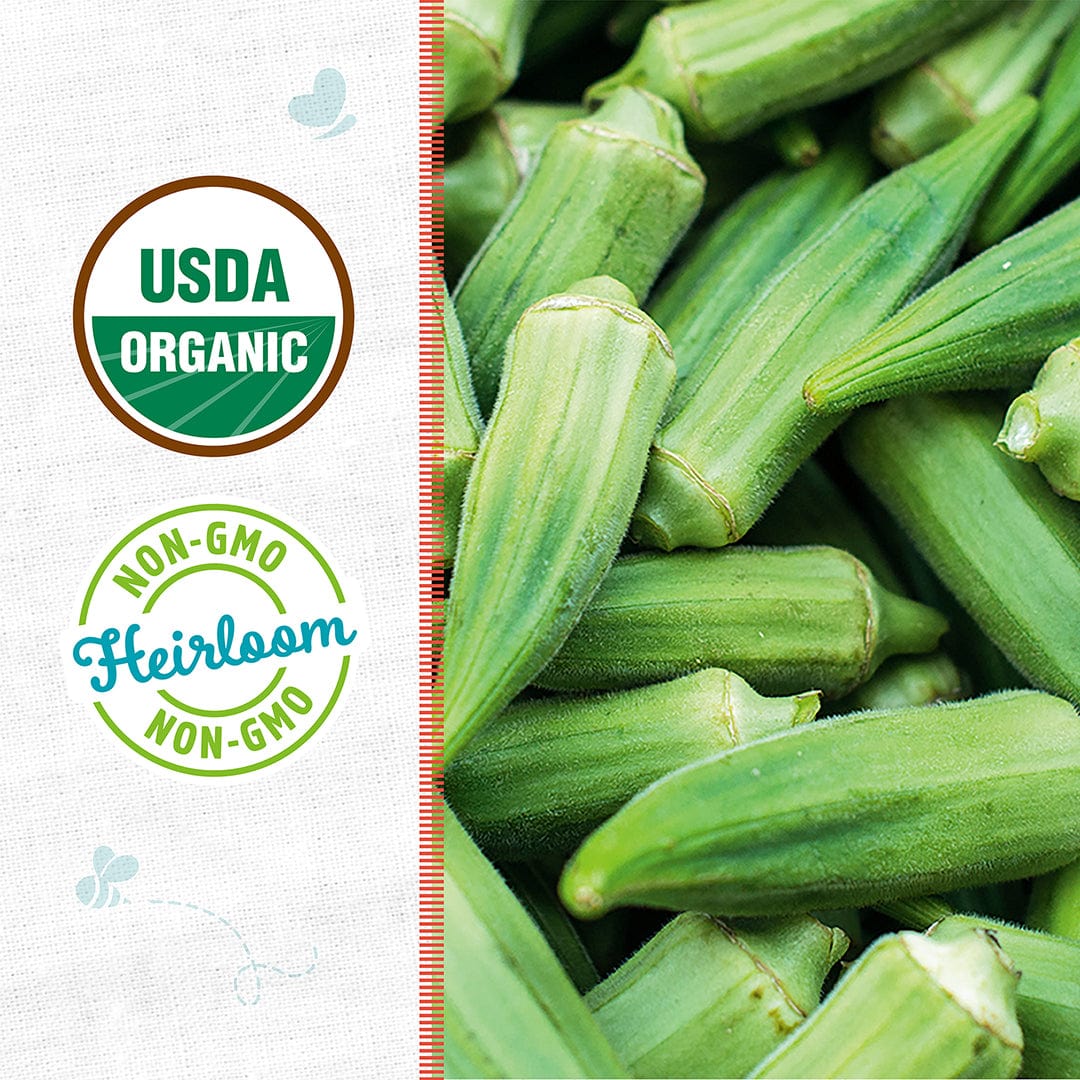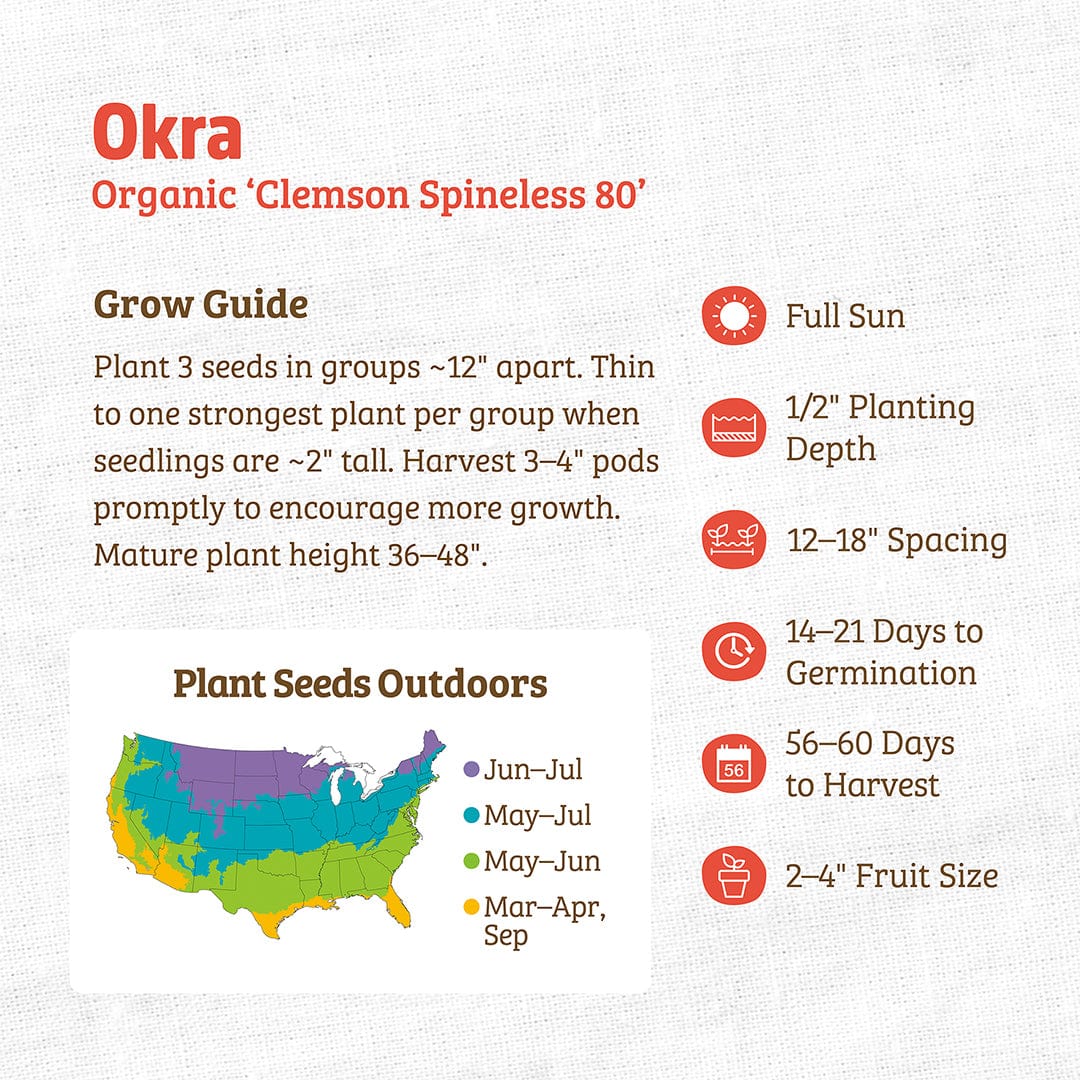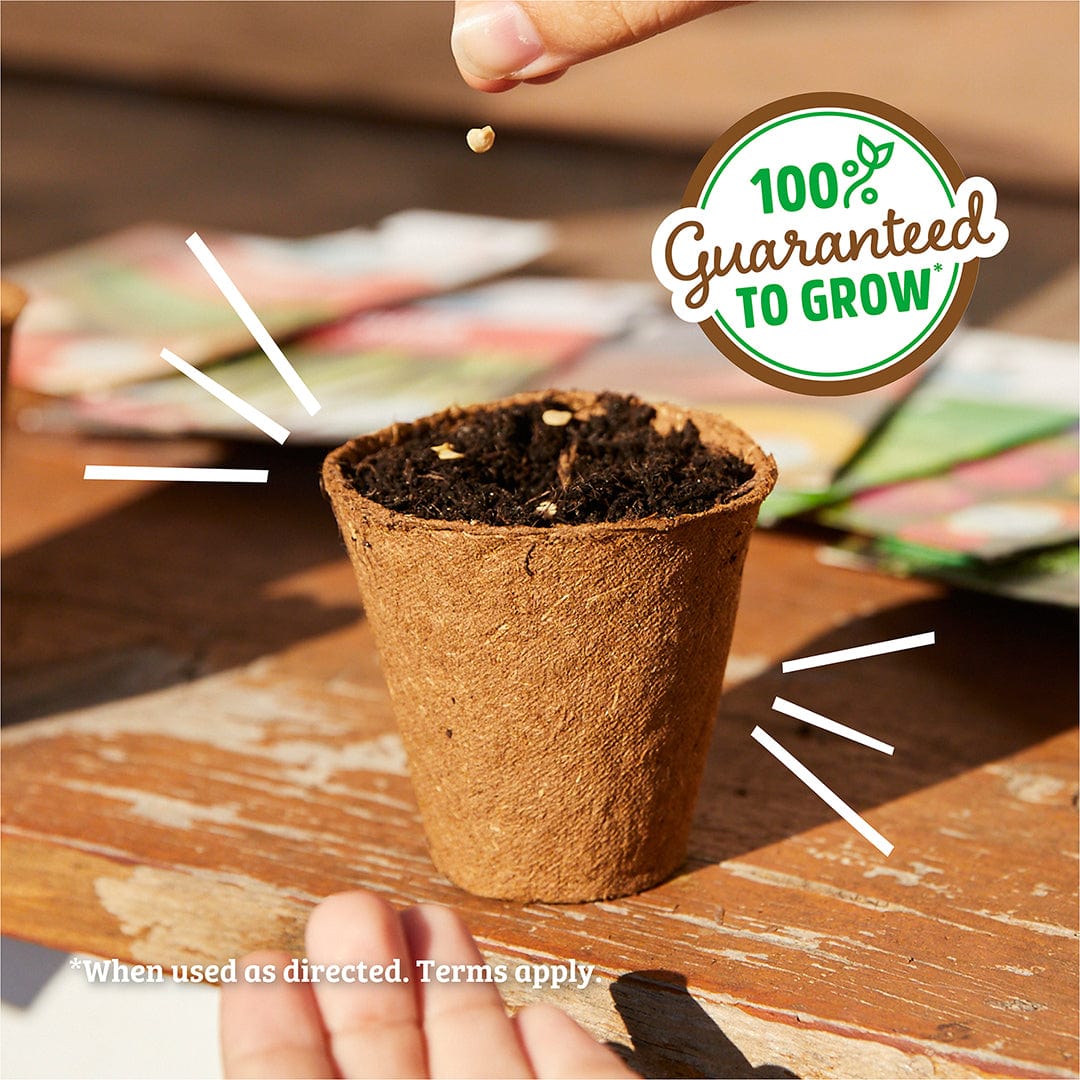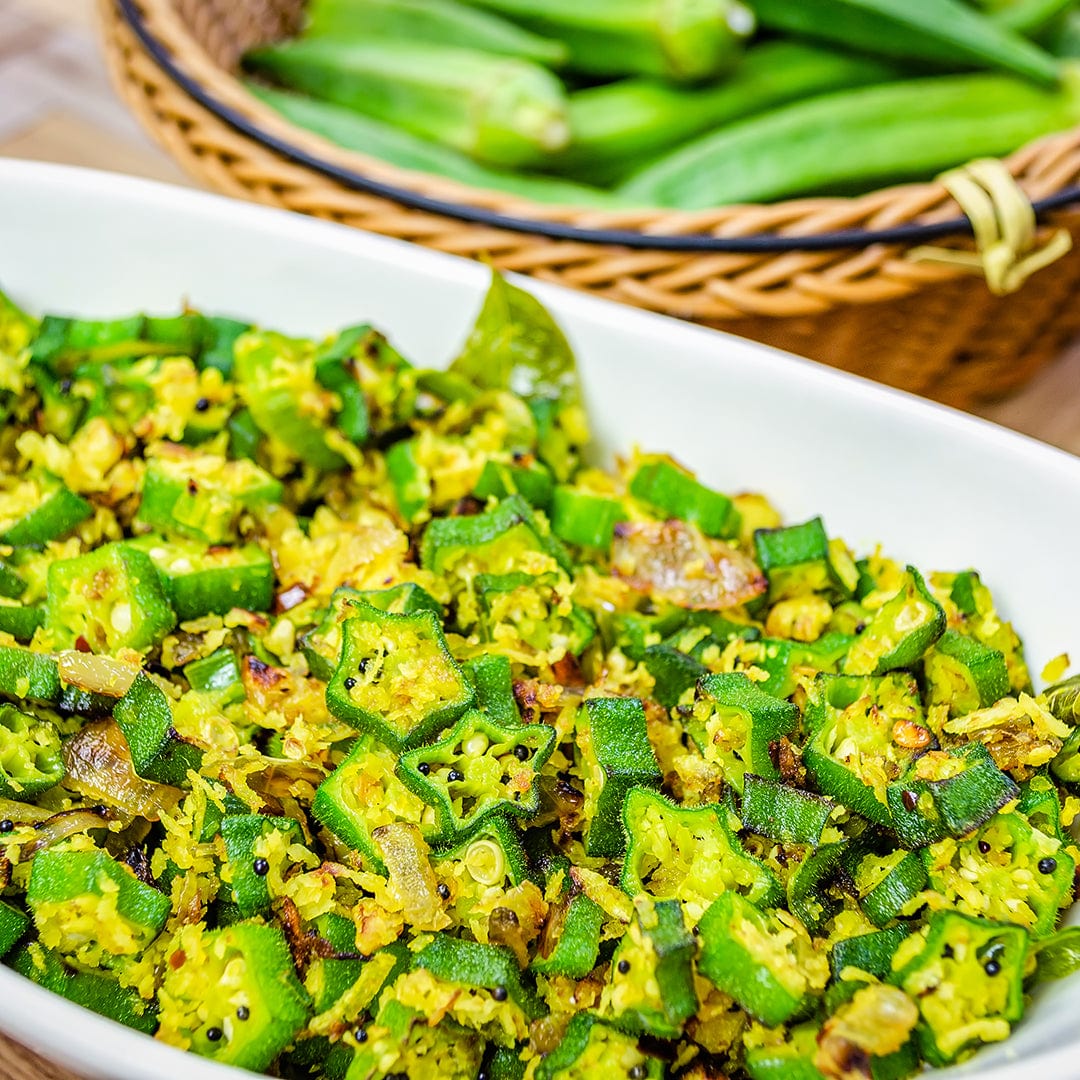





Save 10% Today w/ Code LetsGrow10






Dramatic okra plants with their hibiscus-like flowers provide an ornamental element in the garden as well as producing the nutritious pods that thicken gumbo and are delicious fried or sautéed. Traditionally grown in the warmest areas of the US, the young pods are high in many amino acids, vitamins A, B6 and C, Folate, and thiamin.
Okra are a warm-weather crop that need sufficiently high temperatures (at least 65°F) to thrive, but the warmer the better! For soil, use a fertile, well-draining potting mix that’s tailored for vegetables. For best quality crop, provide full sun (6+ hours of direct sunlight per day).
Okra can be directly planted in the garden once it is warm enough, or started indoors to jumpstart growing. Use our grow calendar tool to find specific planting dates for your region! Seeds germinate in 14-21 days.
For planting outdoors, plant seeds 2" apart, 1/2" deep. Thin to 12-18" when seedlings emerge.
For indoor starting, plant in 2" starter pots or trays, 3 seeds per pot, 1/2" deep. Start 4-5 weeks ahead of the desired transplanting date. Thin to one plant per pot/cell, and transplant 12-18" apart in rows 3' apart. Transition outside (harden) for 7-14 days before outdoor transplant.
Keep the plants well watered throughout the summer months. 1 inch of water per week is ideal, more in a hot, arid region. After the first harvest, remove the lower leaves to help speed up production.
Remove stink bugs that cause wart-like growths on pods.
Harvest promptly by clipping pods at 2-4" long to keep plants productive. Oversized pods become tough.

Organic Okra Seeds — 'Clemson Spineless'







Be the first to know about new collections and exclusive offers.